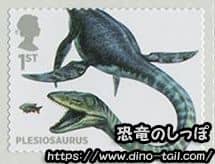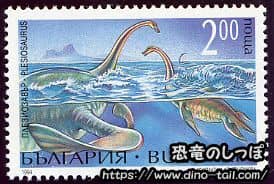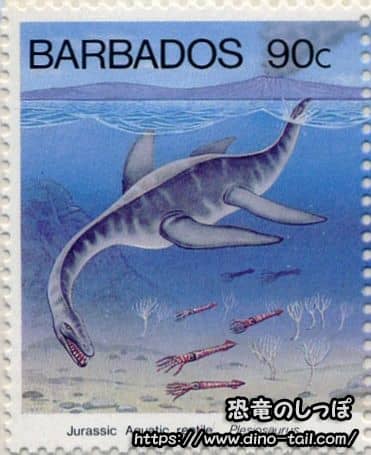About Plesiosaurus (Plesiosaur)
| Scientific Name (Genus) | Plesiosaurus |
| Meaning of Name | Near lizard |
| Classification | Plesiosauria, Plesiosauroidea, Plesiosauridae |
| Total Length | Approx. 3.5 - 5m |
| Diet | Carnivorous (piscivorous) |
| Period | Early Jurassic (approx. 199.6 million - 175.6 million years ago) |
| Sub-classification / Species Name | Plesiosaurus dolichodeirus (Type species) |
| Year of Paper Publication | 1821 |
Features
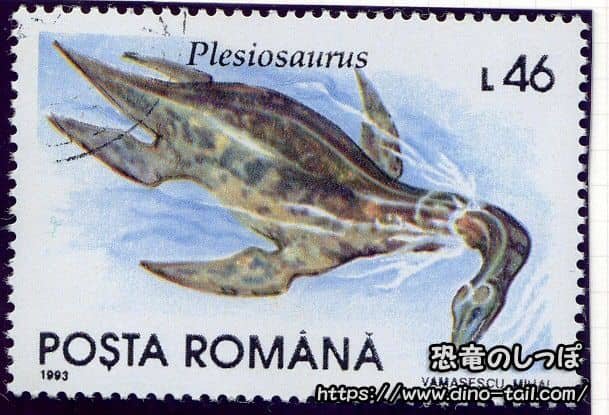
Plesiosaurus was a plesiosaur that lived in the Early Jurassic (about 199.6 million to 175.6 million years ago). Nearly complete skeletons have been found on the Dorset Coast of southern England and in Holzmaden, Germany. The neck vertebrae (neck bones) are preserved in 38-42 pieces, and there were 21 backbones and 28 tail vertebrae.
It was once thought that Plesiosaurus held its neck up like a swan and swam by rowing its flippers back and forth like a boat. However, recent biomechanics research has completely overturned this image.
- The neck was stiff: The long neck, composed of many bones (cervical vertebrae), was actually a relatively stiff and inflexible structure that could mostly only move horizontally and could not bend much to the sides. A swan-like pose was impossible.
- Swimming style was "underwater flight": Computer simulations have shown that the four large flippers were not used for rowing back and forth, but for "underwater flight," generating powerful propulsion by flapping them up and down, like penguins and sea turtles.
Plesiosaurus seems to have preyed mainly on fish. In the seas of that time, ferocious ichthyosaurs (for example, Stenopterygius) were at the top of the food chain, but it is believed that the main diet of ichthyosaurs was cephalopods such as ammonites and belemnites, so it is possible that they had a niche separation from the fish-eating Plesiosaurus. The discovery of a juvenile fossil overlapping the abdomen of an adult suggests that they were ovoviviparous.
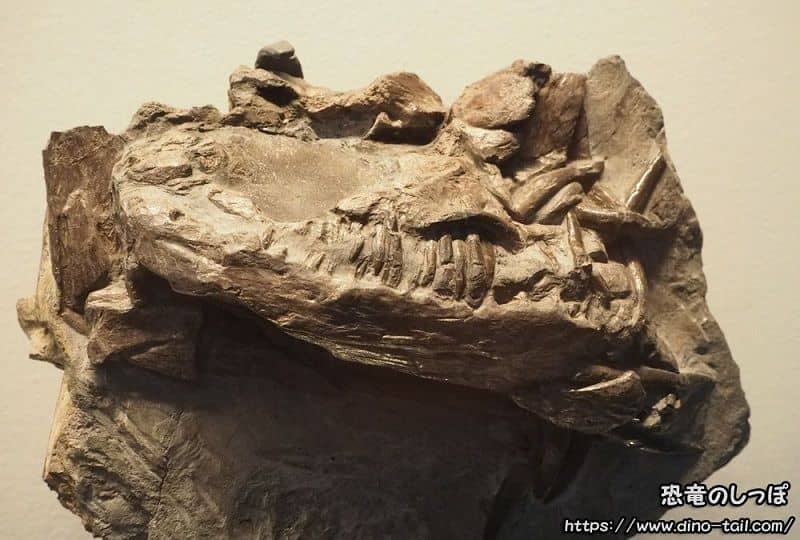
Hauff Museum (Urwelt-Museum Hauff, Germany.)
The Problem of Too Many Species and Reorganization
Because Plesiosaurus was one of the first plesiosaurs to be discovered, for over 150 years, many plesiosaur fossils found around the world were conveniently classified as "Plesiosaurus." It had become a "wastebasket taxon."
However, recent detailed re-examinations have revealed that most of these species are actually completely different genera of plesiosaurs. For example, the species formerly known as Plesiosaurus guilelmiimperatoris is now classified in its own genus, Seeleyosaurus.
As a result, the only scientifically valid "true Plesiosaurus" is the single species originally described from Lyme Regis, England: Plesiosaurus dolichodeirus .
"Doraemon" and "Coo of the Far Seas"
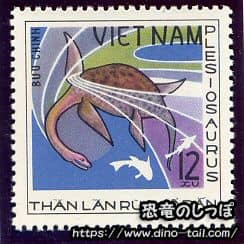
Plesiosaurus is a familiar plesiosaur to the Japanese. A young Plesiosaurus appears in the anime "Doraemon" as Piisuke and in the movie "Coo of the Far Seas."
Nessie, one of the unidentified animals (UMA), was hypothesized to be a descendant of Plesiosaurus trapped in Loch Ness, UK. However, it is now known that Loch Ness was formed geologically recently, and Loch Ness itself did not exist during the Mesozoic Era when plesiosaurs lived.
Plesiosaurus Stamp and Fossil Gallery
